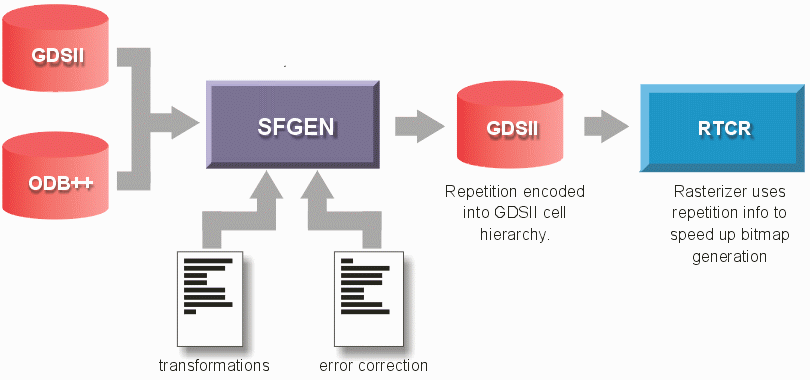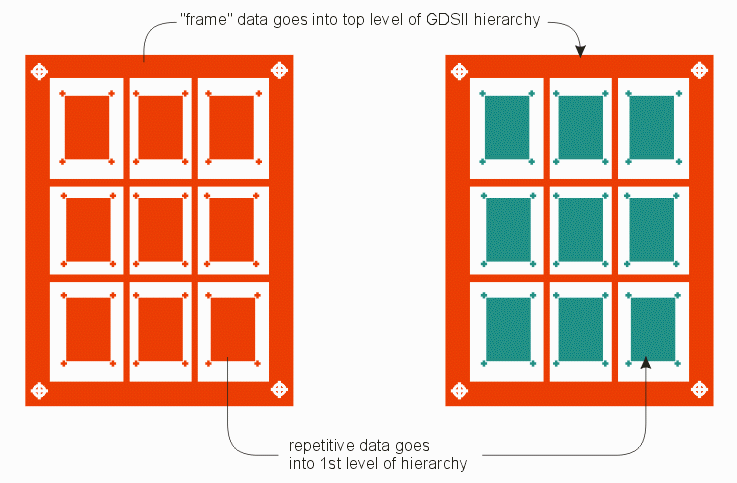
SFGEN was developed to aid in the high speed rasterization of very large panels that contain repeating data such as those used to manufacture printed circuit boards, IC packages and LCD displays.
Rasterizers slow down as the DPI increases and the image area increases. In order to counteract this problem we developed a new rasterizer that takes advantage of the fact that many large masks contain mostly repetitive data.
If the repetition geometries can be identified and separated from the background data, it is possible to use techniques in the RIP that require only small areas to be rasterized by re-using the bitmap for the repeating geometries.

SFGEN performs this task for both ODB++ layout data (commonly used for most PCB panels) and for GDSII data (used for all types of display panels.)
The output of SFGEN is a GDSII file which has been organized into two levels of hierarchy: a top level containing background data and a second level containing one or more repeating "cells."

SFGEN is "smart" and checks to insure that the background frame data does not interact with the repeating data. If it finds such interaction it can either remove the repeating elements or can incorporate the interaction into the repeating elements.
RTCR Uses the Repetition Encoding to Speed Rasterization
The RTCR (Real Time Correction RIP) program reads this optimized GDSII file and knows to make a single bitmap of each of the repeating cell "masters" and then to place the bitmap in the correct locations.
Rasterizers from other developers can also benefit from SFGEN. We've introduced a new flow based on GDSCompact that both reduces redundant data and can convert all polygons data into convex (quadrilateral) polygons. This makes for very fast rasterization and eliminate the need to handle high vertex count and possibly convoluted polygons.
A new annotation engine supports user-created drop in of text and images. Ideal for applications that require serialization or a unique QR-code per circuit.
A new Path Recovery engine supports conversion of polygon data to path with width and pads. Only available in the ODB++ flow.